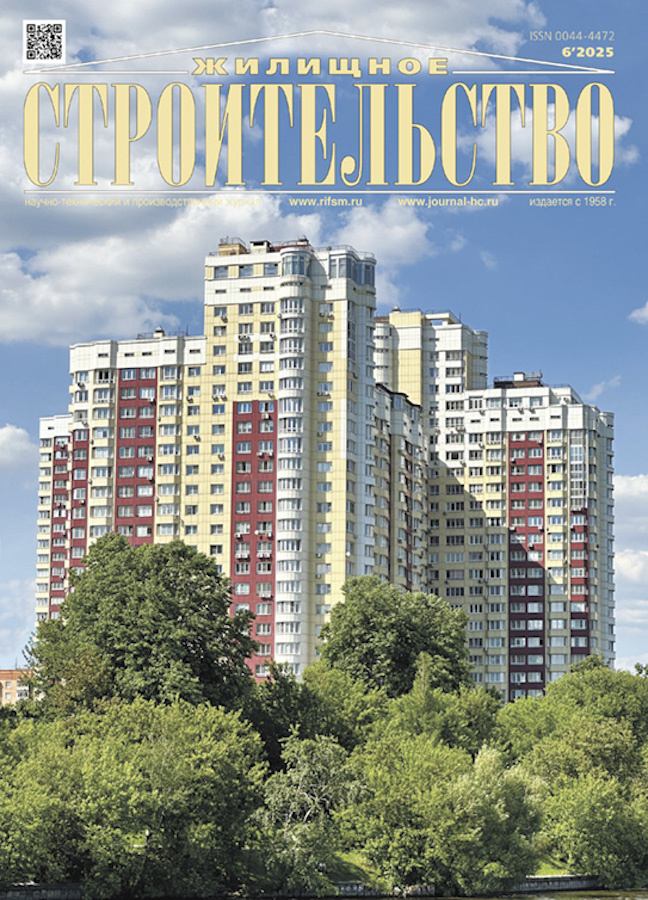Smart Building Technologies for Climate Change Adaptation
- Authors: Sheina S.G.1, Fedorovskaya A.A.1,2, Larin N.S.1
-
Affiliations:
- Don State Technical University
- Scientific Research Institute of Building Physics of the Russian Academy of Architecture and Construction Sciences
- Issue: No 6 (2025)
- Pages: 25-30
- Section: Articles
- URL: https://cardiosomatics.orscience.ru/0044-4472/article/view/688277
- DOI: https://doi.org/10.31659/0044-4472-2025-6-25-30
- ID: 688277
Cite item
Abstract
The article provides an overview of smart home technologies and the possibilities of their application and implementation in megalopolises and large cities, taking into account adaptation to climate change. The analysis of the vulnerability of various sectors of the national economy to climate threats and risks confirms the relevance of the implementation of adaptation and mitigation measures for such a sector as housing and communal services. The authors put forward the idea that the implementation of smart building technologies is one of the tools for adaptation and mitigation to climate change. The review begins with a retrospective analysis of the origin of such a concept as a smart home. For further assessments and prospects for the implementation of such technologies, an overview of existing practices and examples of smart building construction was made. As a result of the review, the advantages of smart building technologies were revealed, and problems with their implementation in practice were identified. Buildings from Russia, in particular, from the Rostov region are presented as examples.
Full Text
About the authors
S. G. Sheina
Don State Technical University
Author for correspondence.
Email: rgsu-gsh@mail.ru
Doctor of Sciences (Engineering)
Russian Federation, 1, Gagarin Sq., Rostov-on-Don, 344003A. A. Fedorovskaya
Don State Technical University; Scientific Research Institute of Building Physics of the Russian Academy of Architecture and Construction Sciences
Email: bina-87@mail.ru
Candidate of Sciences (Engineering)
Russian Federation, 1, Gagarin Sq., Rostov-on-Don, 344003; 21, Lokomotivny Dr., Moscow, 127238N. S. Larin
Don State Technical University
Email: larinnikita516@gmail.com
Postgraduate Student
Russian Federation, 1, Gagarin Sq., Rostov-on-Don, 344003References
- Climate Change 2021: The Physical Science Basis. Contribution of Working Group I to the Sixth Assessment Report of the Intergovernmental Panel on Climate Change. V. Masson-Delmotte, P. Zhai, A. Pirani, S.L. Connors, C. Pean, S. Berger, N. Caud, Y. Chen, L. Goldfarb, M.I. Gomis, M. Huang, K. Leitzell, E. Lonnoy, J.B.R. Matthews, T.K. Maycock, T. Waterfield, O. Yeleki, R. Yu and B. Zhou (eds.). Cambridge University Press. 2021.
- Beloborodov S.S., Gasho E.G., Kondrat’eva O.E., Loktionov O.A. ssessment of the prospects for achieving carbon neutrality in the Russian Federation, taking into account changes in land use and forestry. Vestnik of the Moscow Energy Institute. 2023. No. 2, pp. 151–159. (In Russian). EDN: NEZWKQ. https://doi.org/10.24160/1993-6982-2023-2-151-159
- Bedulina D.S., Blizetskaya E.A., Gusev A.L. et al. Report of the permanent commission on environmental rights of the presidential council for the development of civil society and human rights “Green Turn”. Al’ternativnaya energetika i ekologiya. 2020. No. 19–24 (342–347), pp. 31–157. (In Russian). EDN: MHZTIQ. https://doi.org/10.15518/isjaee.2020.19-24.31-157
- Bondarev E.V. On the issue of consideration of climatic conditions in the application of green technologies in the construction of buildings. Zhurnal Tekhnicheskikh Issledovanii. 2022. No. 4, pp. 3–9. (In Russian). EDN: XOHICB
- Privalikhin S. Modern adaptive systems in a smart home. Avtomatizatsiya i upravlenie tekhnologicheskimi protsessami i proizvodstvami. 2024. No. 1 (139). (In Russian). https://doi.org/10.23670/IRJ.2024.139.162
- Rimshin V.I., Shubin I.L., Yerofeev V.T., Avetisyan A.A. Automation of the life cycle of buildings during reconstruction and major repairs. Zhilishchnoe Stroitel’stvo [Housing Construction]. 2022. No. 7, pp. 6–12. (In Russian). EDN: LIMAVP. https://doi.org/10.31659/0044-4472-2022-7-6-12
- Lyanka O.N., Shkvarya L.V. Singapore: economic growth and the banking sector. Innovatsionnaya ekonomika. 2021. No. 1 (26), pp. 75–84. (In Russian). EDN: BFTTBS
- Vlasov D.N., Danilina N.V. Concepts of sustainable development of territories. Arkhitektura i stroitel’stvo Rossii. 2023. No. 2 (246), pp. 8–9. (In Russian). EDN: QSFPWE. https://doi.org/10.55394/02357259_2023_2_8
- Grabovyy P.G., Azhimov T Z. Strategic directions and development prospects of the construction industry in Russia. Real Estate: Economics, Management. 2024. No. 2, pp. 6–11. EDN: KDYVWS. https://doi.org/ 10.22337/2073-8412-2024-2-6-11
- Danilina N.V., Vlasov D.N. “Healthy” city as a basic concept of territorial development. Ekologiya urbanizirovannykh territorii. 2020. No. 2, pp. 112–119. (In Russian). EDN: KDYVWS. https://doi.org/10.24411/1816-1863-2020-12112
- Korobeynikova E.V., Khorina I.V., Zhirnova T.V. Conditions for the implementation of Smart City projects in the domestic practice of digitalization of the urban environment. Ekonomika i predprinimatel’stvo. 2025. No. 2 (175), pp. 668–673. (In Russian). EDN: WUOPTL. https://doi.org/10.34925/EIP.2025.175.2.121
- Kurakova O.A., Obrezan E.E., Yachmeneva A.N. The Internet of Things (IoT) in smart cities: the role in real estate management. Nedvizhimost’: Ekonomika, Upravlenie. 2023. No. 3, pp. 239–242. (In Russian). EDN: EUPVMZ
- Samarin O.D. Thermal mode of a room with integrated regulation of microclimate systems. Magazine of Civil Engineering. 2022. No. 116 (8). EDN: CKHRYG. https://doi.org/10.34910/MCE.116.10
- Krestelev D.I., Losev K.Yu. Algorithms of predictive analytics of parameters of engineering systems of buildings. Stroitel’stvo i Arkhitektura. 2023. Vol. 11, No. 3, pp. 15. (In Russian). EDN: SYBCRJ. https://doi.org/10.29039/2308-0191-2023-11-3-15-15
- Ananyeva E.S., Korshunova N.N. Smart home as a new type of housing. Stroitel’nye Materialy i Izdelia. 2020. Vol. 3. No. 1, pp. 83–88. (In Russian). EDN: MLNWUB. https://doi.org/10.34031/2618-7183-2020-3-1-83-88
- Davydova T.E., Spivak I.E., Avdeeva E.A. Smart home system in a new reality: dynamics and development prospects. Ekonomika i Predprinimatel’stvo. 2023. No. 4 (153), pp. 1033–1036. (In Russian). EDN: VZNUFS. https://doi.org/10.34925/EIP.2023.153.4.203
- Sheina S.G., Fedorovskaya A.A., Kalitkin A.P. Construction of healthcare facilities using energy-efficient technologies. Sovremennye Tendentsii v Stroitel’stve, Gradostroitel’stve i Planirovke Territorii. 2022. No. 1 (2), pp. 13–22. (In Russian). EDN: QJJMIX. https://doi.org/10.23947/2949-1835-2022-1-2-13-22
Supplementary files











